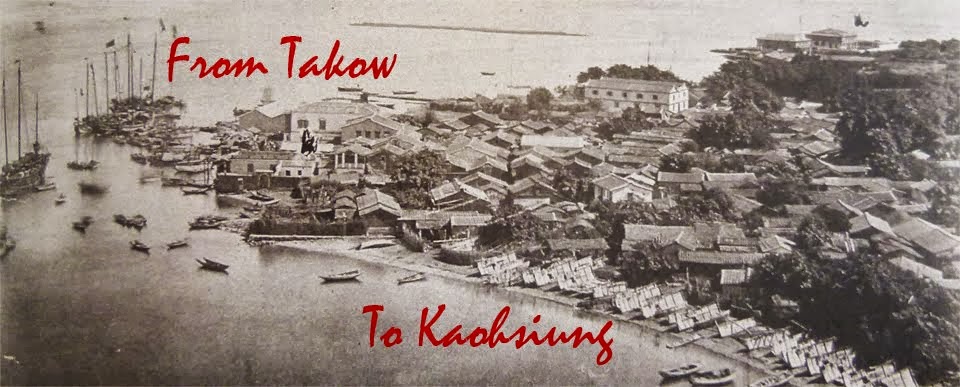subtitle
-- Working draft for upcoming book by Mark Caltonhill, author of "Private Prayers and Public Parades - Exploring the religious life of Taipei" and other works.
Monday 21 February 2022
Huadong (花東) ... Taiwan's "Flowery East" ?
On some maps it appears that Taiwan has a place called "Flowery East" (花東). In reality, however, while this may represent a romantic description of this area, it is simply an alternative way to say "eastern Taiwan", a portmanteau of Hua 花[-lian 蓮 and Tai 台-] Tung 東 counties.
Not to be outdone, the rest of Taiwan is similarly divided into regional units:
Thus Tao-Zhu-Miao (桃竹苗; "Peach-Bamboo-Seedlings") is commonly used for northwestern Taiawan's three predominantly Hakka counties and cities of Taoyuan (桃園; "Peach Garden"), Hsinchu (新竹; "New Bamboo"} and Miaoli (苗栗; "Seedlings Chestnut"), (as well as Hsinchu City), all of which conveniently contain a botanical element. With almost 4 million people, they represent around 1/6th of Taiwan's total population.
Zhong-Zhang-Tou (中彰投), a rather more prosaic portmanteau representing the central counties/cities of Taichung (台中), Changhua (彰化) and Nantou (南投), is less commonly heard and seen. Nevertheless, with more than 4.5 million peiople, it represents around 1/5th of Taiwan's population, making it the second-largest of these regional city-county groups.
Next, moving counterclockwise around the island, comes Yun-Jia-Nan (雲嘉南), representing Yunlin (雲林), Chiayi (嘉義) and Tainan (台南). Perhaps more recognisable is the Chia-Nan pairing, probably due to the important Chia-Nan Plain (嘉南平原), which, also including parts of Yunlin and Changhua to the north and Kaohsiung to the south, is the largest plain in the whole of Taiwan.
As such it was a major incentive attracting Han-Chinese migration across the Taiwan Strait. Despite having the lowest rainfall in Taiwan, the plain is well served by rivers (although the Jia-Nan irrigation system 嘉南大圳 wasn't constructed until the middle of the Period of Japanese Rule, 1895~1945) and was the island's main center for rice and sugarcane production, which have been supported / supplanted by peanuts, garlic, corn, sweet potatoes and so forth.
The Gaoping (高屏) area, accounting for more than 3.5 million people, is most recognizable to outsiders for the Gaoping River (高屏溪) that was renamed in 1960 after the two counties it ran between.
The ROC's (N.B. not "Taiwan's") two outlying archipelagos of Kinmen (金門) and Matsu (馬祖), both belonging to Fujian Province are, not surprisingly, grouped together to form the Jinma (金馬).Area, to which, sometimes, the Penghu Archipelago is also added to create the Peng-Jin-Ma (澎金馬) Area. Even this, however, only has a total population of around 250,000, that is, about 1 percent of the nation's total.
The Ji-Yi (基宜) region of Keelung (基隆: Mdn. Jilong) and Yilan (宜蘭) seems only to exist when meteorologists are discussing northeastern Taiwan as the area of the nation's highest rainfall.
But even this is perhaps one step above Taipei City and New Taipei City (formerly Taipei County), which lacks any portmanteau combination of their names or a nickname such as "The Two Norths" (雙北) [MC: or my own attempts to promote the title "Bei Area"], and is simply discussed by the uber-prosaic "Greater Taipei Area" (大臺北地區) with a population of more than 6.5 million people.
Keelung City is sometimes included in a Taipei--Keelung Metropolitan Area (臺北基隆都會區), which must further make Yilan feel like the bastard child in Taiwan's domestic relationships, as is sometimes also Taoyuan City to form the Taipei-Keelung-Taoyuan Metropolitan Area (臺北基隆桃園都會區), perhaps so that the Taoyuan International Airport can pretend it is in the capital city, which must make Hsinchu and Miaoli feel like the abandoned Hakka siblings of Taoyuan.
Copyright Jiyue Publications 2022
Subscribe to:
Post Comments (Atom)


No comments:
Post a Comment